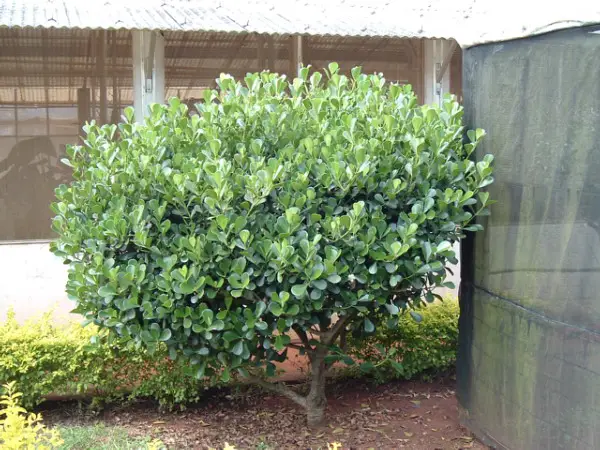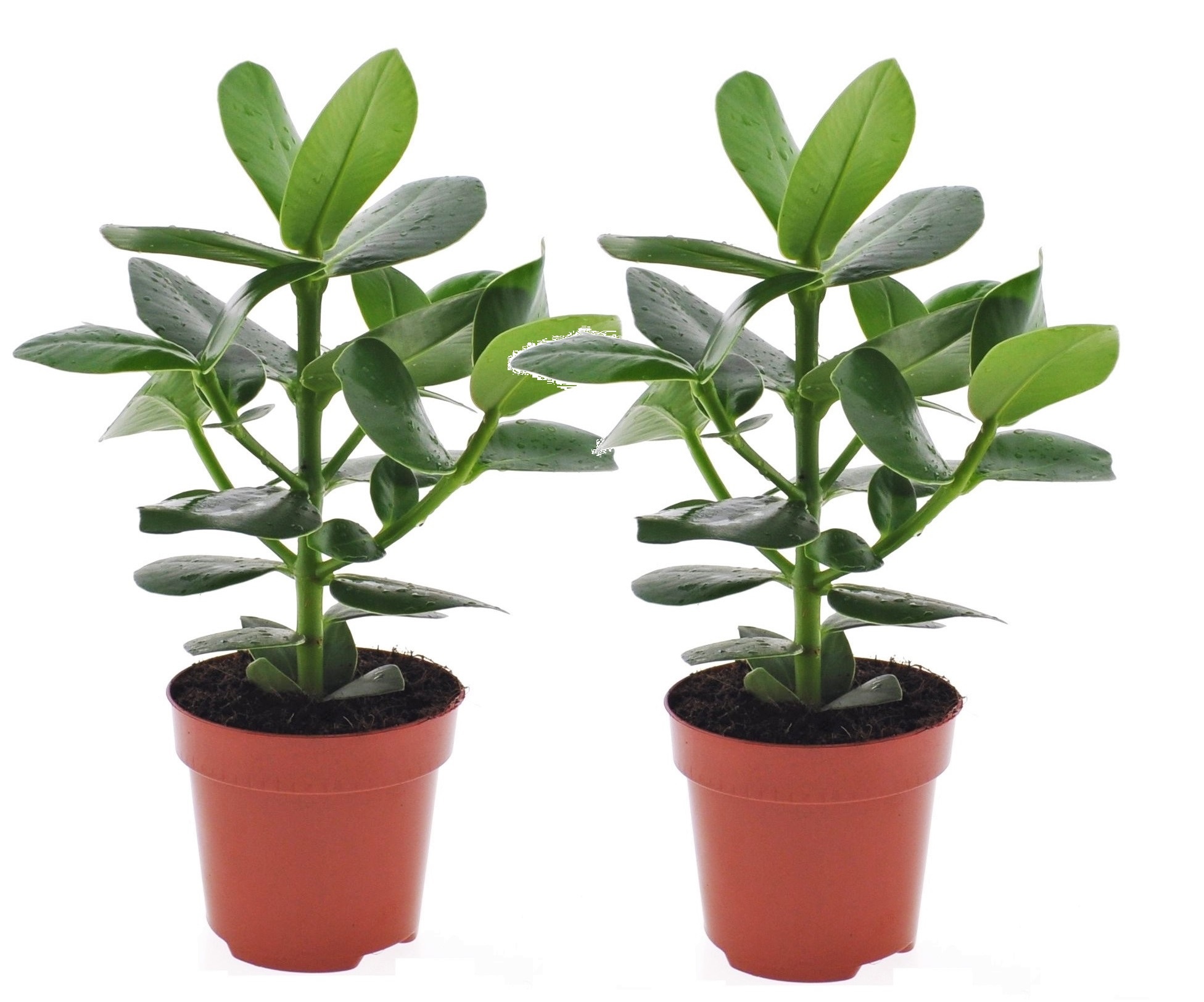This article is a detailed guide on how to cultivate and care for two popular types of Clusia plants: Clusia Guttifera and Clusia Rosea. If you are looking to learn how to nurture and maintain the freshness of these lush green ornamental plants, then this is the perfect guide for you.
We will walk you through step by step on selecting the right soil, planting Clusia, and providing essential information regarding suitable light, water, and temperature conditions for them. Additionally, you will discover how to care for and protect Clusia plants from common issues such as pests and leaf drop.
An evergreen shrub called clusia (Clusia guttifera) makes a great hedge or privacy screen. Due to its dense foliage made up of evergreen, oval, teardrop-shaped leaves, clusia is a well-liked hedge shrub. This bush can withstand salt, heat, and drought. Because of its easy care and quick growth, it also makes a great privacy screen.
Learn How to Grow a Clusia Hedge
To begin planting a Clusia guttifera hedge, start with small, healthy shrubs. Make sure you have enough plants to cover the entire length of your evergreen hedgerow. The distance between shrub stems should be at least 5 feet (1.2 m). You must make sure the soil is rich and well-draining before planting Clusia.
Plant the shrubs about 5 feet (1.2 meters) apart to grow a formal hedge. However, you might place the plants more apart if you prefer a less formal natural fencing. The foliage of shrubs benefits from adequate space between stems so that it can breathe and grow.
Before the growing season, in the spring, is the ideal time to plant a fresh Clusia hedge.
How to maintain a clusiana hedge
In warm areas, Clusia guttifera flourishes in direct sunlight. Regularly watering the shrub and making sure the fertile soil has great drainage are both essential for a healthy hedgerow. In zones 10 and 11, where the temperature doesn’t drop below 30°F (-1°C), cultivate Clusia hedges.
Clusia bushes have thick, paddle-shaped leaves that give them a dense, unpolished appearance. Clusia hedges are capable of growing to great heights, but routine pruning of the bushes keeps the informal hedge at a height of 5 to 6 feet (1.5 to 1.8 meters). Clusia plants make excellent privacy hedges that can provide protection from the wind, noise, and nosy neighbors.
Clusia hedge trimming
Clusia guttifera hedges only require minor trimming to stay in good condition. To clip back extra foliage, you can either use manual hedge shears or a power hedge trimmer. For young Clusia hedges and shrubs to grow healthily, frequent trimming is essential. Clusia hedges benefit from minimal trimming.
You can train the Clusia hedge to take on a square shape by giving it the right amount of trimming. From the shrub’s base to its summit, the complete natural privacy screen will feature dense, thick foliage. Will eventually feature a sturdy square wall for all-year protection and natural seclusion.
Need for Fertilizer for Strong Clusia Hedges
Three feedings each year are beneficial for clusia hedges. For healthy development, use a balanced fertilizer such as a 10-10-10 solution in the spring, summer, and fall. You can select from liquid feeds, organic, granular, or slow-release fertilizers, depending on your preferences.
Clusia hedges being multiplied
Take stem cuttings from a healthy plant to propagate Clusia hedges. A simple and inexpensive approach to extend your natural backyard hedge is to grow fresh Clusia plants from cuttings. Although using Clusia cuttings for propagation is not certain to succeed, you might be able to create new bushes.
To grow Clusia hedges from stem cuttings, cut off a healthy, softwood stem that is 1 to 2 feet (30 to 60 cm) long, right below a leaf node. Remove all of the stem’s lower leaves until there are just two bare nodes. Apply rooting hormone to the end of the Clusia stem. Plant in a container with fertile, well-draining soil that is wet.
You can transplant the rooted Clusia cutting to your garden after roots start to show after a few weeks.
Clusia Hedge Growth and Pests
The principal plant pests that hinder the growth of Clusia rosea and Clusia guttifera are scale insects and thrips. The good news is that healthy Clusia hedges can withstand these pests to a certain extent. On the stems of the plant, scale appears as tiny, brown growths. Thrips, which are teeny, flying insects, reside under leaves.
Clusia hedges lose their sap to thrips and scale. If the pests are not eliminated, they may infest the plant and impede its growth.

To get rid of thrips, use a neem oil solution or insecticidal soap. For a recipe to manufacture a neem oil natural insecticide, please see this article about organically getting rid of plant pests.
It’s crucial to prune infected branches, twigs, and leaves if you spot scale bug indications. Never compost infected plant parts; always get rid of them in the trash. Try using rubbing alcohol and a cotton swab to get rid of the bugs if you just see a few scale insects.
Conditions that Affect Clusia Hedge Growth
In general, Clusia rosea and Clusia guttifera are disease-free. As long as they are in full sun or some shade, these tough plants ought to thrive. To prevent fungal infections and root rot, water the plant only when the soil is just slightly dry.
FAQs About Growing Clusia Hedge
Easy-care Even amateur gardeners have few issues with clusia hedges. To guarantee that your hedges thrive and produce lustrous evergreen foliage all year long, follow a few additional care instructions.
Clusia Tree (Clusia rosea)
Clusia rosea, a sizable tree with leaves like those of the Clusia bush, is another variant of the clusia plant.

Popular medium-sized flowering tree from tropical America is Clusia rosea. The Clusia tree, often known as the autograph tree or pitch apple, can reach heights of 65 feet (20 meters). Oval, thick, olive-green leaves make up its evergreen foliage. Clusia trees in the dwarf form make excellent hedges.
A guide to growing Clusia Plants (Clusia rosea)
Clusia rosea prefers medium to brilliant indirect light, such as that coming from an east or west-facing window or that is set back from a south-facing window. Keep it out of direct sunlight, which can burn the leaves.
Temperature and humidity: The autograph tree prefers climates resembling greenhouses, with temperatures in the range of 60 to 85 degrees Fahrenheit and high humidity. Avoid drafts and avoid exposing plants to temperatures below 50° F. Additionally, keep away from vents for heating or cooling. Use a humidifier, spritz the leaves frequently, or place the pot on a shallow tray filled with pebbles and water to keep your plant hydrated in drier parts of the house.
Use a loose, quickly draining soil that provides for optimum root aeration. For example, use a premium potting mix with coconut coir or orchid bark added to enhance drainage.
Pot prerequisites:
Grow in a container with enough drainage holes that is 2 to 4 inches wider and deeper than the root ball. Faster, more robust growth will occur from allowing the roots sufficient space to spread. Your plant will grow more slowly if it develops root rot.
Clusia Plant Care Instructions
When the top inch of soil feels dry to the touch, water to maintain a light moisture level in the soil. Avoid letting the roots sit in wet soil, which can cause root rot, by adding water until it starts to flow out of the drainage holes in the pot. Use of regular tap water at room temperature is OK because Clusia rosea is not sensitive to the minerals in water.
When the plant is actively growing, fertilize once a month with a water-soluble plant food diluted to half strength. During the winter, avoid fertilizer.
Clusia rosea may require pruning once or twice a year due to its rapid growth rate in order to keep its intended form and avoid growing lanky. To promote branching and fuller, bushier growth, trim the stems back with clean hand pruners to just above a pair of leaves. To grow more plants, you can save the stem cuttings.
To keep your autograph tree from outgrowing its container, you might need to repot it every year or two. It’s time to repot your plant if you see roots emerging through the drainage holes at the bottom of the container. Change the soil and transfer your plant to a new container that is about 2 inches larger than the old one.
Damage to the foliage: If your autograph tree has yellow or discolored leaves, this is typically due to stress brought on by overwatering or underwatering, low humidity, temperature changes, or excessive amounts of direct sunshine. Trim away any damaged leaves and water your plant only as much as is necessary to keep the soil moist but not drenched.
Aphids, scale, mealybugs, and spider mites are some common pests that affect autograph trees periodically, but they hardly ever cause major damage. View instructions on how to recognize and eliminate these and other typical houseplant pests.
Implementing Clusia
Stem cuttings that are rooted in water or soil make it simple to spread Clusia rosea. In the spring and summer, when the plant is actively growing, is the greatest time of year to propagate.
Waterborne propagation:
Take a cutting of a stem that is 4 to 6 inches long and has several strong leaves on it. In order to prevent bacteria from growing, submerge the cutting in water, ensuring sure the foliage is above the waterline. Replace the water a few times a week.
Planting new stem cuttings straight in a top-notch potting mix will also cause them to take root, provided you keep the soil consistently moist. For each cutting, make a small hole in the ground and place the bottom of the stem inside, leaving the foliage above the ground. To prevent the soil from drying up, keep the cuttings in a warm location and water it frequently.
Growing without soil: Clusia rosea can also be grown without soil, hydroponically, in a glass vase filled with water. This is one of the simplest ways to cultivate an autograph tree, yet it’s also one of the most beautiful because you can display its elaborate root structure. Because you can easily add extra water to the vase as necessary to ensure the roots are always covered, it also has the benefit of minimizing underwatering and overwatering.
As long as you sometimes add a few drops of liquid fertilizer to the water to provide your plant with the nutrients it needs for healthy growth, a stem cutting that has taken root in water will frequently live for months.
Growing Clusia Outdoors
Clusia rosea is frequently cultivated in gardens as a salt-tolerant evergreen shade tree or privacy hedge in coastal regions of the deep South (Zones 10–11). Also available is a lovely dwarf cultivar (C. rosea ‘Nana’) that works well as a compact bush or shrub.
If you reside in a cooler climate, you can grow an autograph tree as a potted plant on a sunny porch or patio during the summer and bring it within during the winter.
Keep in mind that autograph trees often reseed aggressively to naturalize. In areas where its spread cannot be controlled, the Florida Native Plant Society advises against using it. It is not recommended to grow autograph trees in Hawaii since they are thought to be quite invasive.






